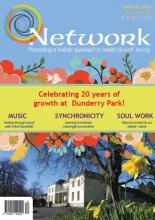Celtic Seership, Omens and Divination from Nature

Finding lost things and people has been a central and very real skill of seers, whose visions enabled the finding of lost objects, drowned bodies, lost children or stray animals. We have an example of the discovery of a thief from the Life of Saint Columcille, abbot of Iona. He called upon two of his brothers to go seek a poor thief called Erc, whose location he had precisely envisioned by means of his augury or frith: Now cross the strait to the island of Mull, and look for the thief Erc, in the little plains beside the sea. He came last night secretly, alone, from the isle of Coll, and he is trying to conceal himself during the day among sand-hills, under his boat which he has covered with grass; so that by night he may sail across to the small island where the sea-calves (seals) that belong to us breed and are bred; in order that the greedy robber may fill his boat with those that he thievishly kills, and make his way back to his dwelling.’ The monks find and detain Erc but, because the thief is starving, Columcille sends him home with a gift of mutton instead of the seal-meat he intended to take.
The Frith is a Scots Gaelic method of augury, or seeking out information by means of the observation of signs in nature. The Scottish name Freer is an anglicization of the title Frithir or augurer. Members of the Frithir family were hereditary augurs of the Kings of Scotland in the middle ages. The frith was undertaken for many purposes: to ascertain the nature of the season ahead, to find what was lost, to ask a question and receive an omen about a planned enterprise.
The frith was done on the first Monday of the quarter; quarter days were the equinoxes and solstices of the year when the rent was due, but in earlier times, the frith was probably done on the quarter days of the Celtic year: Samhain, Imbolc, Beltane and Lughnasa. Domestic beasts were locked up, so that they shouldn't become inadvertent objects of the frith. Fasting and barefoot, bare-headed and with closed eyes, at sunrise, standing at the doorsill, facing outward, with a hand on each jamb, the frithir spoke the augury invocation and opened his eyes. Whatever the eyes lighted upon gave the augury or divinatory sign of the season.
Some say that while doing so, he walks sunwise around the fire, which is in the middle of the floor of the house, and that he walks thrice around it, once in the name of the Father, once in the name of the Son, once in the name of the Holy Spirit ... He then goes with closed or blindfolded eyes to the door step of the house, and places a hand on each jamb. He appeals again to the all-seeing God to grant him his request. He opens his eyes, and looking steadfastly before him, without moving his eyes or his eyelids to right or to left, upwards or down, he carefully notes all that he beholds. According to some, he crosses the threshold and goes sunwise around his house, keeping his gaze always before him as described, and saying or chanting the hymn. From the nature and position of objects within his sight, he draws his conclusions.
As with many Celtic rituals, it was proper to invoke spiritual help before making the frith:
God over me, God under me, God before me, God behind me,
Myself upon your path, God, Thou, God, in my steps.
The frith made by Mary to her Son, The offering of Bride through her hollow hands,
Saw you it, O King of Nature? - Said the King of Nature that he saw.
The augury of Mary for her own child, Early made during his circuit,
Knowledge of truth rather than knowledge of lies, That I myself may see my word's vision.
Son of Fair Mary, King of Nature, Give me vision of my own word,
With unfailing grace, in the asssembly, That shall never be quenched or diminished.
This invocation remembers the incident when the young Jesus’ guardians lost him when they went up to Jerusalem. In Gaelic tradition, St Brighid (Bride) was said to be the foster-mother of Jesus and she and Mary, his mother, are often invoked as the guardians of this augury, since they were the first to do it to find Jesus. The Frith is sometimes also known as Augury of Mary or of the Well, or of Bride.
The frith requires a viewing frame which demarks the area in which it is done. We’ve seen that a doorway facing the outside was used, remarkably like the linteled doorway of dolmens, but it could also be done in a free-standing style by making a tube or telescope of the hands together. This made a path between the worlds to the place of quietness and vision:
The frith that Brighid made for her Fosterling, Making a pipe within her palms:
'I see my Fosterling by the well-side, Teaching the people without doubt.
The frith prayer was spoken through the tube to clear the way and may hark back to the poetic method of Imbas Forosna, which also uses the palms of the hands, as we can see by these two extracts from the Augury of Brighid:
The augury made my Mary for her Son, Breathed by Brighid through her palm;
Have you seen the frith, O Guiding Maid? Said the Guiding Maid, she had.
It may be thought that such portents are the result of coincidence, but the ability to read the book of nature is dependent upon the formation of an issue or question, a focussing of intent. Until that moment, the signs in nature are insignificant: but once the intent and search for an answer has begun, nature becomes charged with meaning and is a book that we can always read.
Caitlín Matthews is acknowledged as an authority on Celtic wisdom and the ancestral shamanic traditions of Britain and Ireland. Born of British and Irish parents, she has explored the ancestral heritage of these beautiful islands, finding practical ways that help us maintain our respect for the land and forebears.
This article has been extracted from Celtic Visions: Seership, Dreams and Omens of the Otherworld by Caitlín Matthews, Watkins, 2012.
Caitlin Matthews will offer an experiential workshop in Ireland in February 2018 on: Celtic Visions: Seership, Omens & and Divination from Nature. She will bring her powerful mix of vision and practice to teach participants how to read the omens of the natural world and use traditional methods, including 'the Three Illuminations' - ancient Irish modes of oracular divination by incantation, resonance and shamanic incubation - and 'the Augury of Brighid' which was employed by the ancestral freers of Gaelic Scotland. There will be opportunities to give and receive oracles and auguries, by means of the dha shealladh or 'the two seeings' and by other traditional methods.
This workshop is open to all, and will be held in Dunderry Park, County Meath, February 16-18, 2018.
For more details please see this link
Latest Issue
Upcoming Events
-
17/04/2020 to 26/04/2020
-
18/04/2020
-
23/04/2020
-
15/05/2020 to 23/05/2020
-
16/05/2020 to 17/05/2020
Recent Articles
Article Archive
- November 2013 (2)
- December 2013 (1)
- January 2014 (2)
- February 2014 (2)
- March 2014 (2)
- April 2014 (4)
- May 2014 (2)
- June 2014 (1)
- July 2014 (4)
- August 2014 (1)

